Common Questions About Agriculture
Accurate, well-sourced information
Helpful information is just a click away! We've made it easy to access accurate and well researched answers to some of the most common questions about agriculture.
No. Living or once living things contain genes, whether they are genetically modified or not. “Gene” is the root word for genetics. Genes are located on chromosomes. They control the traits of an organism such as height, productivity, drought tolerance or pest resistance.
This general statement is a common misconception. Several naturally occurring pesticides are highly toxic, even carcinogenic. Copper sulfate is highly toxic and shown to cause liver disease. Rotenone is a plant extract found in some species within the pea family. It has received significant attention because of studies indicating a potential link to Parkinson’s disease. All pesticides, natural or synthetic, are reviewed and regulated by the Environmental Protection Agency (EPA).
Eating GMO products does not impact our genes. Our bodies digest the proteins and absorb the amino acids in food. The body cannot tell where a protein comes from and treats all proteins alike. This misconception may stem from the issue of allergic reactions. When a gene from one organism is transferred to another, there is a chance that a person could have an allergic reaction to the gene that was placed in the new organism. The World Health Organization explains that the “transfer of genes from commonly allergenic foods is discouraged.” They clarify that there have been no allergic effects found related to GM foods in general.
GMO seeds, like any others, can be saved and replanted. This misconception is a result of so-called ‘terminator genes’ that were researched in the 1900s to make seeds sterile, but they never made it into production. However, when farmers purchase GMO seed, they enter into contracts with seed companies and sign an agreement to purchase new seed each year and not save seed from their crops to plant the following year. This is a result of two factors, neither of which is related to the ability of the harvested GMO variety to sprout if planted. First, the contract’s provisions are binding and represent a business decision on the part of the farmer and the seed company’s desire to protect their variety and, certainly, to encourage future sales. Second, most commercial growers don’t save seed because the generation of harvested seeds will not uniformly contain all of the desired genetic traits of the original seed.
Synthetic fertilizers are not allowed in certified organic products, but select pesticides are allowed. The USDA National Organic Program (NOP) oversees organic certification. Organic producers must follow a strict process for production and processing of products. But organic does not mean “without pesticides.” Natural pesticides and synthetic pesticides are allowed in some cases. The NOP requirements provide a list of synthetic substances that may be used in organic production as long as these do not contaminate crops, soil or water. Chlorine and hydrogen peroxide are examples of some allowable synthetic substances allowed in organic production.
Tractor technology is changing! Auto-steer and GPS (global positioning systems) help make farming more efficient. Tractor technology is also helping the environment. Manufacturers have developed “tier 4 engines” that are practically smokeless. They get better fuel efficiency and clean exhaust! Some tractor manufacturers are even testing out autonomous tractors. These are tractors that drive without a human being in the driver’s seat! As horsepower increases in tractors, the size of equipment goes up. This can have negative effects on soil compaction. Autonomous tractors would be smaller, more efficient and able to run around the clock. It’s too early to tell about if or when the widespread adoption of autonomous tractors will happen, but it is exciting to think that new tractor technology could improve efficiency, reduce soil compaction and help alleviate the stresses of a dwindling ag workforce…while still planting and harvesting food for the world!
Agriculture is a necessity! It creates jobs, helps our economy and provides our basic necessities — food, fiber (like cotton and wool) and shelter (like lumber for homes). By 2050, there will be nearly 10 billion people on Earth. This is about 3 billion more mouths to feed than there were in 2010. Increasing food production today while preserving tomorrow’s resources will be necessary to meet the needs of our growing population and demands creativity and innovation. Farmers of all ages face this challenge and must continue to be advocates for the importance of agriculture and the need for the industry in the future
Yes. American farmers and ranchers are the starting point in our nation’s food chain, which produces the safest food supply in the world. The U.S. Department of Agriculture (USDA) and the U.S. Department of Health and Human Services (HHS) are home to the primary federal food safety agencies. HHS is home to the Food and Drug Administration (FDA) and the Centers for Disease Control (CDC). The Food Safety and Inspection Service (FSIS) is housed at USDA. FSIS is “responsible for ensuring that the nation’s commercial supply of meat, poultry and egg products is safe, wholesome and correctly labeled and packaged.” The FDA focuses on both fresh and processed food products. In addition to the federal agencies, many states have their food safety agencies and laws that govern the production of safe and wholesome foods within their respective states. The CDC’s role is to prevent “illness, disability and death due to domestic and imported foodborne diseases.” The CDC typically becomes involved when a food safety concern or outbreak has arisen.
According to the World Health Organization, GMOs are defined as “organisms in which the genetic material (DNA) has been altered in a way that does not occur naturally.” The USDA’s National Institute of Food and Agriculture defines plant biotechnology as “a set of techniques used to adapt plants for specific needs or opportunities.” Genetic modification happens in nature just not consistently. GMOs are the product of consistent modification by scientists.
Gene editing allows scientists to make changes to a specific target sequence of DNA within a gene. It modifies the gene in a precise and predictable manner. Gene editing tools provide a great deal of flexibility in the kinds of genetic changes that can be made. Changes that can be made include simple edits to, or deletions of, one or a few targeted letters in the genetic code. The tools can also be used to insert much longer genetic sequences from the same species or another one — similar to what can be done with older transgenic technologies. The key difference is that these edits and insertions can be made at very precise locations in the plant’s genome. Gene editing is more precise than genetic engineering, and technology keeps getting more reliable. It’s also relatively cost-effective compared to other methods, meaning more scientists could gain access to it. All of these advantages mean more potential innovation.
Radio frequency identification (RFID) is a technology that has been used to identify and track livestock animals. You’ll find RFID in action on dairy farms for example, where cows often have high-tech collars that help the farmer track how much the cow is eating and how much milk she is producing. Researchers suggest that this “tagging technology” could be expanded to crops, so that an individual crop could be traced more efficiently from the farm to the table, using a simple computer chip. RFID has already made it into the hay-bailing market where farmers use the technology to track large bales of hay and keep track of important characteristics such as weight and moisture level.
Genetic modification and cloning are not the same. Cloning provides an exact copy. Cloned genes can only be copied in the same species. Genetic modification (genetic engineering) something scientists do to pick out a specific set of genes and place these genes in an organism where the traits would be helpful. This can happen across species. Take corn, for example. No one likes pests eating their corn. So, scientists found a naturally occurring bacteria called Bt. This bacteria usually lives in the soil, but scientists were able to extract the gene that kills insects from this bacteria. By adding this gene to a corn plant, it can naturally fend off pests.









